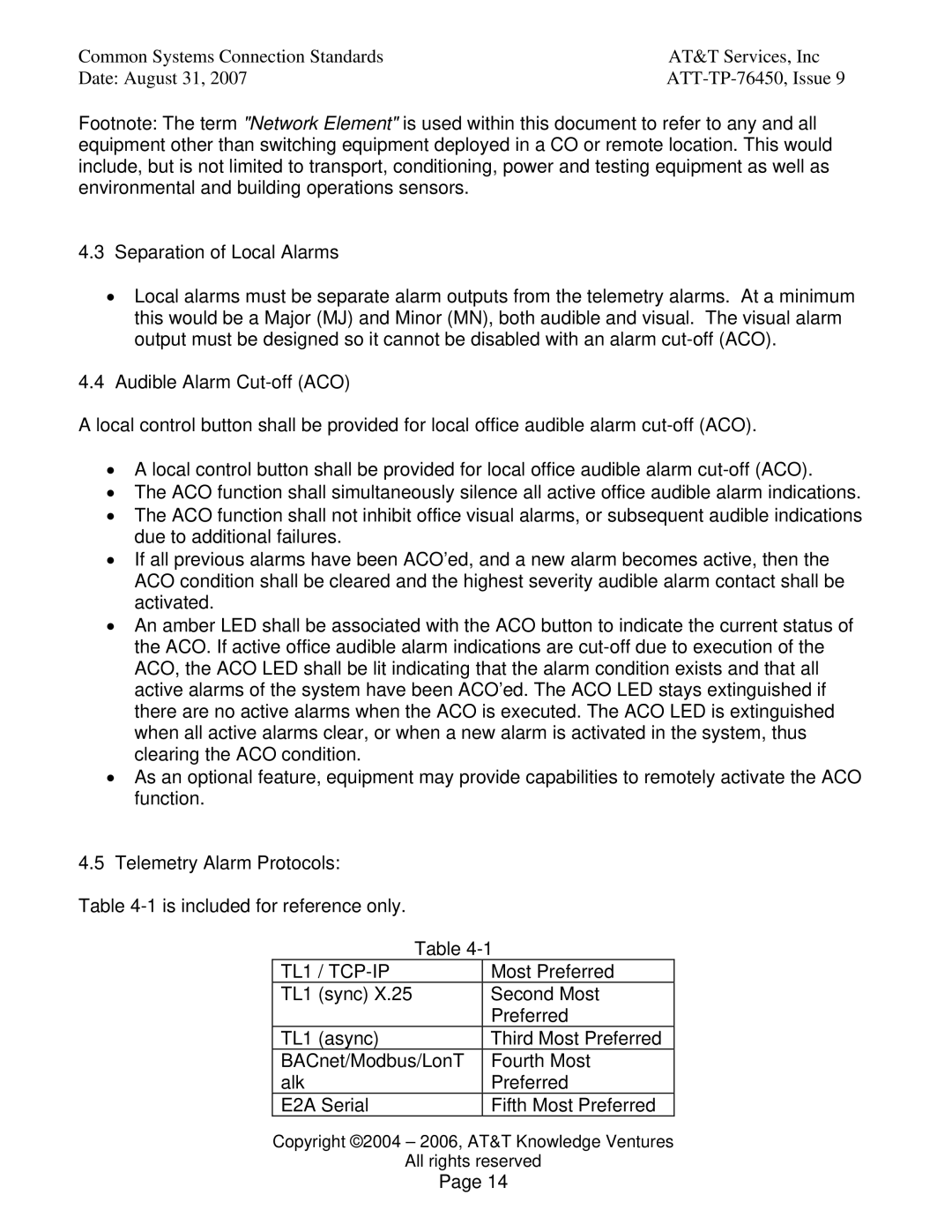Common Systems Connection Standards | AT&T Services, Inc |
Date: August 31, 2007 |
Footnote: The term "Network Element" is used within this document to refer to any and all equipment other than switching equipment deployed in a CO or remote location. This would include, but is not limited to transport, conditioning, power and testing equipment as well as environmental and building operations sensors.
4.3Separation of Local Alarms
•Local alarms must be separate alarm outputs from the telemetry alarms. At a minimum this would be a Major (MJ) and Minor (MN), both audible and visual. The visual alarm output must be designed so it cannot be disabled with an alarm
4.4Audible Alarm
A local control button shall be provided for local office audible alarm
•A local control button shall be provided for local office audible alarm
•The ACO function shall simultaneously silence all active office audible alarm indications.
•The ACO function shall not inhibit office visual alarms, or subsequent audible indications due to additional failures.
•If all previous alarms have been ACO’ed, and a new alarm becomes active, then the ACO condition shall be cleared and the highest severity audible alarm contact shall be activated.
•An amber LED shall be associated with the ACO button to indicate the current status of the ACO. If active office audible alarm indications are
•As an optional feature, equipment may provide capabilities to remotely activate the ACO function.
4.5Telemetry Alarm Protocols:
Table
Table
TL1 / | Most Preferred |
TL1 (sync) X.25 | Second Most |
| Preferred |
TL1 (async) | Third Most Preferred |
BACnet/Modbus/LonT | Fourth Most |
alk | Preferred |
E2A Serial | Fifth Most Preferred |
Copyright ©2004 – 2006, AT&T Knowledge Ventures
All rights reserved
Page 14
